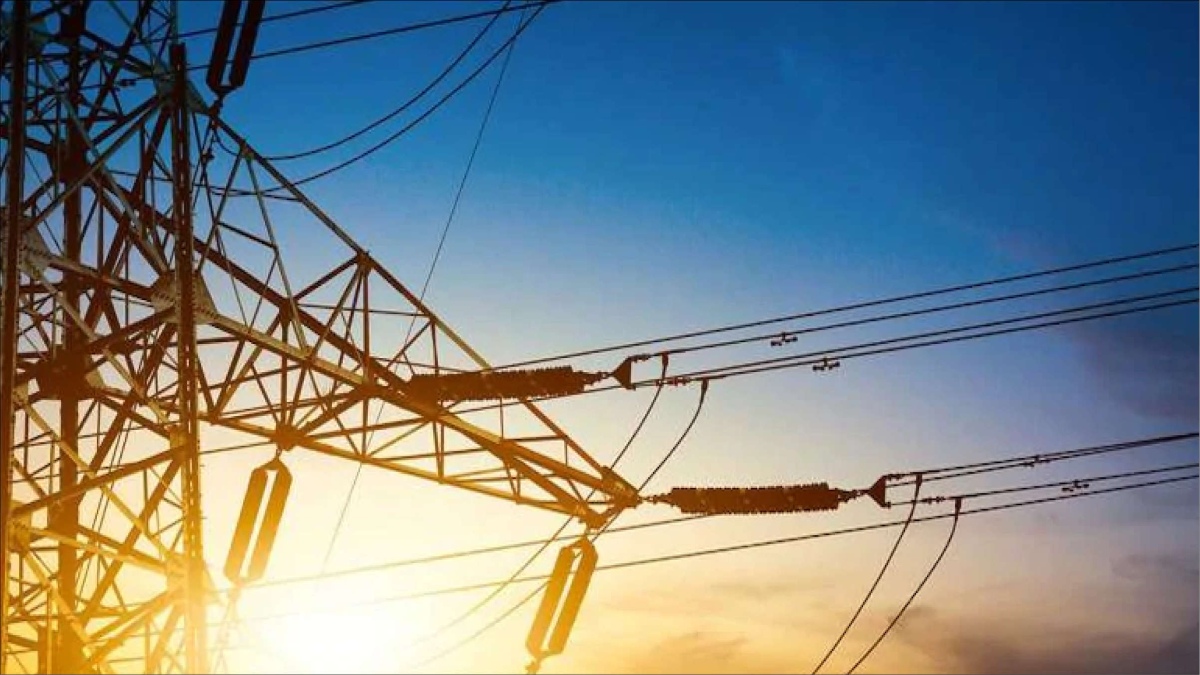The 2021-22 Budget tabled in the Parliament by the Finance Minister, Nirmala Sitharaman, has received a mixed response from stakeholders in the energy sector. While the massive outlay for revamping the power distribution sector was lauded across the board, the response to the Budget proposals from the renewable energy sector was not too enthusiastic.
The industry is positive about the Budget outlays for Solar Energy Corporation of India (SECI) and Indian Renewable Energy Development Agency Limited (IREDA).
Some of the key proposals in the Budget include:
• 3.05 trillion (~$41.92 billion) outlay for a revamped reforms-based result-linked power distribution sector program over five years
• Infusion of additional capital of Rs.10 billion (~$137 million) in SECI and Rs.15 billion (~$205.6 million) in IREDA
• Increase in customs duty on solar inverters from 5% to 20% and on solar lanterns from 5% to 15% to encourage domestic production
The finance minister also said that a phased manufacturing plan for solar cells and solar modules would be announced soon to build up India’s solar capacity.
In Budget 2020, an allocation of Rs.220 billion (~$3.08 billion) went to the power and renewable sector.
Some of the major budget outlays in the power sector include the Rs.26 billion (~$356 million) for solar power and Rs.11 billion (~$150 million) for wind power. The largest outlay was for the Integrated Power Development Scheme (IPDS), which received a whopping $53 billion (~$724 million). One of the main programs of IPDS is smart meter installations.
The Union Budget of 2021-22 has been met with a general sense of optimism but also a few reservations. One such review is that is that the budget is public sector centric and the private sector has largely been left to fend for itself. Whilst participants in the power sector may have even more reason to justify this sentiment, there have been certain welcome announcements. It will be crucial to see how these measures are implemented.
The key announcements are as follows:
DISTRIBUTION REFORM
DISCOM reform has been identified as a major agenda item for the present Government and has seen significant focus. It has been proposed that a revamped reforms based result linked power distribution sector scheme will be launched with an outlay of INR 3,05,984 crores over a period of five years to provide assistance to DISCOMS for infrastructure creation including pre-paid smart metering and feeder separation, upgradation of systems which are connected with financial improvements. This is a welcome step to curb mounting aggregate technical and commercial losses (AT&C Losses).
The Finance Minister has also proposed that a framework will be put in place to give consumers the power to decide their choice of supply from among more than one distribution companies (DISCOMS). As a large number of DISOMS are state owned, monopolistic and strapped of liquidity, these distribution utilities are ineffective in ensuring round the clock supply of power to consumers.
If implemented well, this could be a first (and major) step in introducing competitiveness and thus forcing DISCOMS to focus more on the needs of the final consumer. However, it is unclear how this move would and could be implemented at the individual consumer level. Extensive infrastructure development along with co-ordination and co-operation would be required not only with the supply chain, but also amongst DISCOMS in order to implement this on a meaningful scale.
It would be remiss not to mention here that there are massive outstanding regulatory assets. Despite the provision of a liquidity package infusing INR 1.2 lakh crore which helped at reducing systemic stress over the DISCOMS, the financial viability of DISCOMS is still a serious concern as has also been highlighted in the budget speech. The high regulatory assets/liabilities of DISCOMS has also been a major issue with respect to attracting private investment in the distribution sector, and attempts to privatise DISCOMS in the Union Territories have not seen major progress.
Although, the proposals in the Budget are a step in the right direction to promote competition in the sector and provide relief to the consumers, it will be important to see what impact this move could have on the financial position of DISCOMS. There is a concern that in the current status of things, such state owned or debt ridden DISCOMS are being set up for failure.
RENEWABLES
Perhaps, the renewables sector will feel most let down by this budget. Not only have the asks of the sector not been addressed but some of the existing benefits have also been taken away. A critical and unwelcome change in this regard relates to the custom duty for items of machinery, instruments, appliances, components or auxiliary equipment (including those required for testing and quality control) for setting up of solar power generation projects, which was capped at a 5% ad valorem rate previously. This exemption has been taken away. Developers would now be burdened by the increased costs of import and this would also lead to litigation under the power purchase agreements for change in law claims (adding to the burgeoning list including safeguard duty, GST et al).
Nevertheless, the announcement of the ‘Hydrogen Energy Mission’ (generating hydrogen from green sources) and the announcement of additional capital infusion into Solar Energy Corporation of India (Rs 1000 Crores) and Indian renewable Energy Development Agency (Rs 1500 Crores) are a few welcome measures in relation to an otherwise damp budget for the renewables sector.
DISPUTE RESOLUTION
‘Minimum Government and Maximum Governance’ is one out of the six pillars for this budget under over which it has been proposed by the government that in order to promote ease of doing business for those who deal with government or central public sector enterprises (CPSEs) and carry out contracts, a conciliation mechanism for quick resolution of contractual disputes will be set up. It is however unclear whether such a mechanism will be extended to disputes with DISCOMs, which are predominantly state owned and how such a conciliation mechanism will co-exist with the prevailing contractual and regulatory mechanism available to the participants of the sector. The key to the success of any such mechanism would depend on the relevant institution/authority having adequate non-governmental participation as resolution professionals and not showing any tendency to subscribe to the view of the government and the efficacy. Given past experiences, it would be difficult to win over the trust of the private sector in any such government driven conciliation and therefore this would have to be time tested in order for it to bring any considerable reform to the sector.
FUNDING STRUCTURES AND DISINVESTMENT
The budget has also announced strategic disinvestment of public sector enterprises with an objective of minimising presence of the CPSEs to create a new space for private sector investment and has classified various sectors as strategic and non-strategic. The power sector has been classified as a strategic sector and it is proposed that it will have bare minimum presence of CPSEs and the remaining CPSEs will be privatised, merged with other CPSEs or closed. This appears to be a conducive step towards reform in the sector which is dominated by public sector enterprises, however in order to attract private sector investment the government has to work towards resolving the debt situation of the DISCOMS and generally ease the regulatory burden on entities in the sector.
An asset reconstruction company is being proposed to be set up, essentially as a “bad bank”, to take over stressed debt of the public sector banks, then manage and dispose of the assets to AIFs and other potential investors. This will go a long way in managing the non-performing status of several power sector debts and potentially rejuvenate several stalled projects.
Another welcome suggestion is the setting up of a development finance institution (DFI), the National Bank for Financing Infrastructure & Development (NaBFID). The intention is to reduce the burden on banks which are struggling to provide liquidity to the power sector, as well as to be able to raise long term capital at low rates from the international market. NaBFID will however face quite a few challenges, not least the continued lack of maturity of the corporate debt market and the problem with identifying a sustainable source for long-term funds.
Additional relaxations have been made for InVITs, including allowing FPIs to invest in debt instruments issued by InVITs and a proposal that dividends from project companies to the InVIT will be exempted from taxation.
In the previous budget, the Government had provided a tax exemption for sovereign wealth funds and pension funds investing in infrastructure. This was subject to certain conditions which were difficult to meet. The present budget proposes to ease some of these restrictions including the prohibition on private funding, prohibition on loans and borrowings and restriction on commercial activities and direct investment in infrastructure. The ability to attract long term funds in infrastructure is a critical aspect for continued growth and these changes should be crucial from this perspective.
RATIONALISATION OF PROVISIONS RELATING TO SOVEREIGN WEALTH FUNDS OR PENSION FUNDS
Traditionally, investments in the infrastructure or energy sector are made using a non-operating holding company structure, which, in turn, holds investments in power generating SPVs. In line with the stated intent and objective of the exemption, it is now proposed that the benefit of tax exemption is proposed to be extended to sovereign wealth funds or pension funds making investments in an Indian non-operating holding company or NBFC, registered as infrastructure finance company or infrastructure debt fund which, in turn, makes investment in wholly-owned subsidiaries, joint ventures, or SPVs carrying on specified infrastructure projects. Further, there is a relaxation of condition from 100% investment in eligible infrastructure company, to 50% investment in an eligible infrastructure company. Apart from this, certain additional amendments have been proposed to remove the difficulties faced by these funds in meeting the condition required for seeking tax exemption.
No TDS on dividends paid to a business trust by the special purpose vehicle
While the dividends paid to a business trust by the special purpose vehicle are exempt under the existing tax provisions, the withholding tax provisions did not provide any specific exclusion for not withholding the tax when making dividend payouts to business trust. This lacunae has now been plugged by inserting a second proviso to Section 194 of the Act, to exclude the applicability of withholding tax on dividend paid to business trust.
Expanding TDS provisions on purchase of goods by energy players
While the previous Budget introduced TCS provisions on sale of goods, this Budget has proposed to replace the same with tax deduction on purchase of goods @ 0.1% subject to conditions prescribed. Hence, the liability to deposit taxes has been shifted to energy companies making payments towards the purchase of equipment / goods, subject to satisfaction of other conditions. The amendment may create unintended litigation in future, especially on composite contracts which may be subject to TDS under other provisions of the Act at a higher rate.
Also, higher tax rate is proposed for specified persons who have not filed income tax returns in earlier 2 years for which time limit of filing the tax return is already expired and taxes are more than INR 50,000 in each of these years. This would put an additional burden on energy players to obtain additional documentation from payees while deducting the taxes, while making payments.
GOODWILL NO LONGER A DEPRECIABLE ASSET
The contentious issue on whether goodwill is a depreciable asset has now been put to rest by amending the relevant tax provisions to state that goodwill is not a depreciable asset and would not be eligible for depreciation under Section 32 of the Act, thereby, overriding the SC decision in this context. Further, if this acquired goodwill is transferred, then appropriate long-term or short-term capital gains would be levied after deducting the cost paid in this regard.
This amendment may act as a deal breaker, wherein acquiring company would now not be eligible for tax deduction (by way of depreciation) on the excess consideration paid. Also, it would be interesting to note that the aforesaid amendment though prospective in nature, may prompt tax authorities to contend to deny the depreciation benefit to earlier years as well.
Advance Tax applicable on dividend income only on declaration /payment basis.
With the abolition of DDT, shareholders were made liable to pay tax on such dividends. However advance tax was applicable on such dividend income. Considering this genuine hardship, the advance tax requirement on dividends (other than dividend under Section 2(22)(e)) is now applicable only on declaration or payment basis.
PROCEDURES FOR REOPENING OF ASSESSMENTS REVAMPED
With the advent of the technology and integration of information from all reporting agencies, the government has realised that it is now far more simpler to track down the income escapement cases. Therefore, the Budget has revamped the reopening provisions and reduced the time limit from the current 6 years to a period of 3 years. Further, in case of serious income escapement exceeding INR 50 lakhs or more in a year, the reopening may happen up to a period of 10 years after prior approval. However, considering the income escape limit, in a way, this amendment would now provide the reopening up to 10 years (unlike 6 years in earlier regime). Also, a notice would be issued before reopening the assessment to provide the opportunity of being heard and order in this regard would be passed by the assessing officer before initiating the assessment.
OTHER AMENDMENTS
The other amendments covered reduction in the time limit for filing revised and belated tax returns, completion of assessments, faceless ITAT appeals and revamping the AAR. Few key demands of power sector such as concessional withholding tax rates for Indian ECBs, relaxations in thin cap provisions etc. remained unmet. Holistically, this Budget had more to do with clarificatory and compliance-oriented amendments.
In conclusion, the budget announcements for the coming financial year have placed strong emphasis on revival of the public sector in India, however in respect of the power and energy sector the government could have introduced more systemic reforms like tax consolidation schemes for large energy projects, relaxations in indirect taxes, incentives for renewables etc. Overall, for the time being, it appears that all the eggs for the sector continue to be placed in one basket of the “Electricity (Amendment) Bill 2020” (Bill). The Bill has seen opposition from power sector workers and is also one of the items of protest under the current farmers agitation. In the backdrop of the current budget, it becomes even more critical that the government shows political will to pass this legislation on a fast track basis, to ensure meaningful reforms in the sector. As regards the budget, the effectiveness of the positive announcements made in the budget will depend on the will of the public sector enterprises to implement or exploit these changes until such time that the Bill is made into law.























